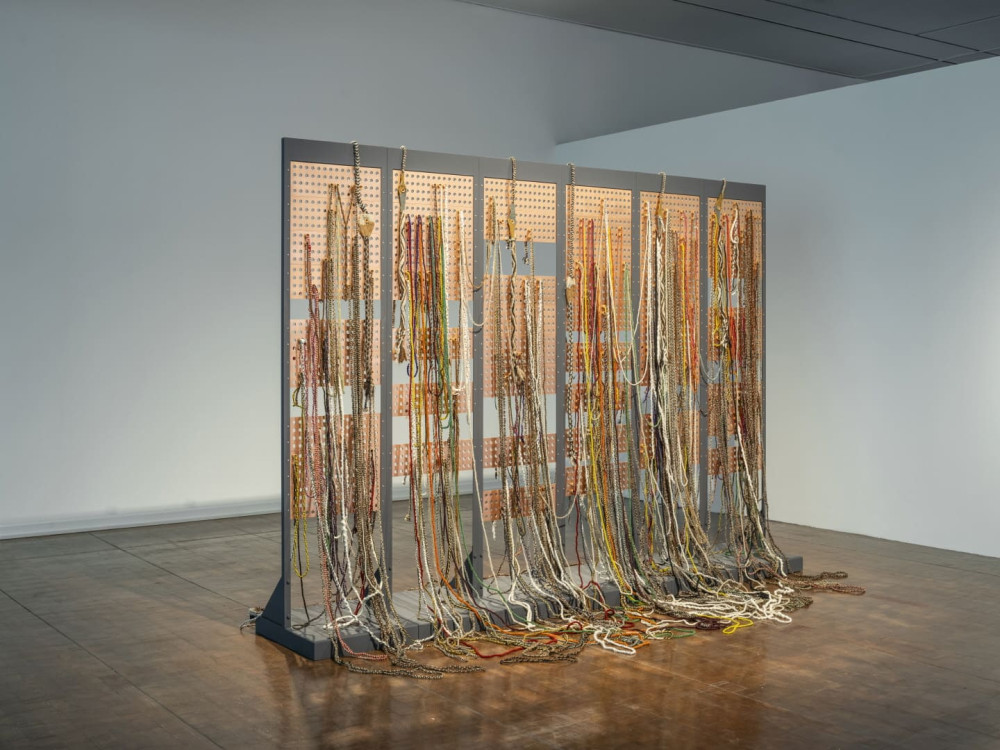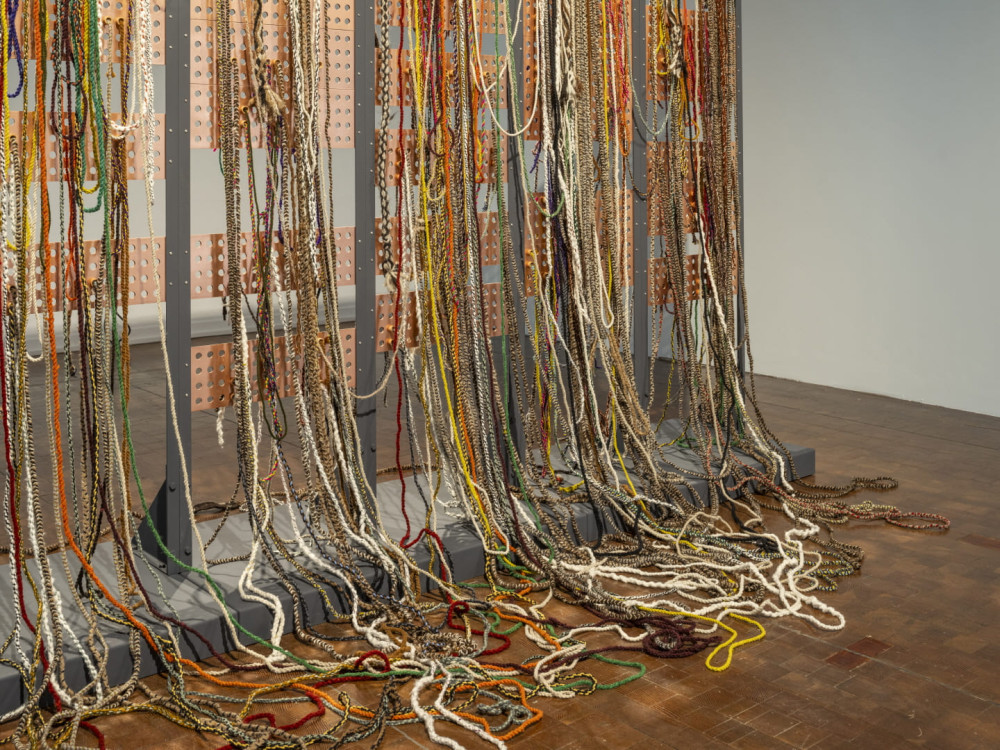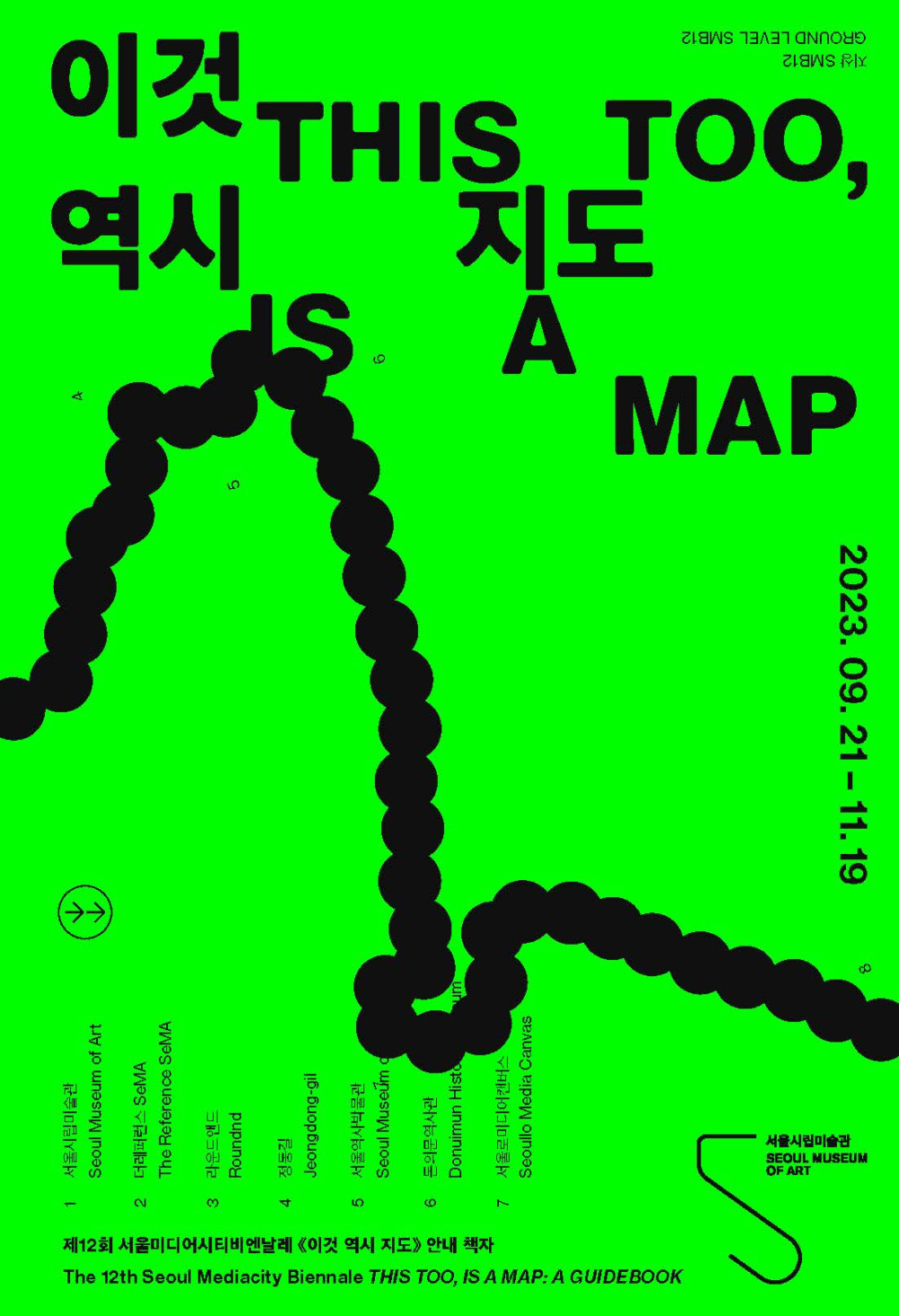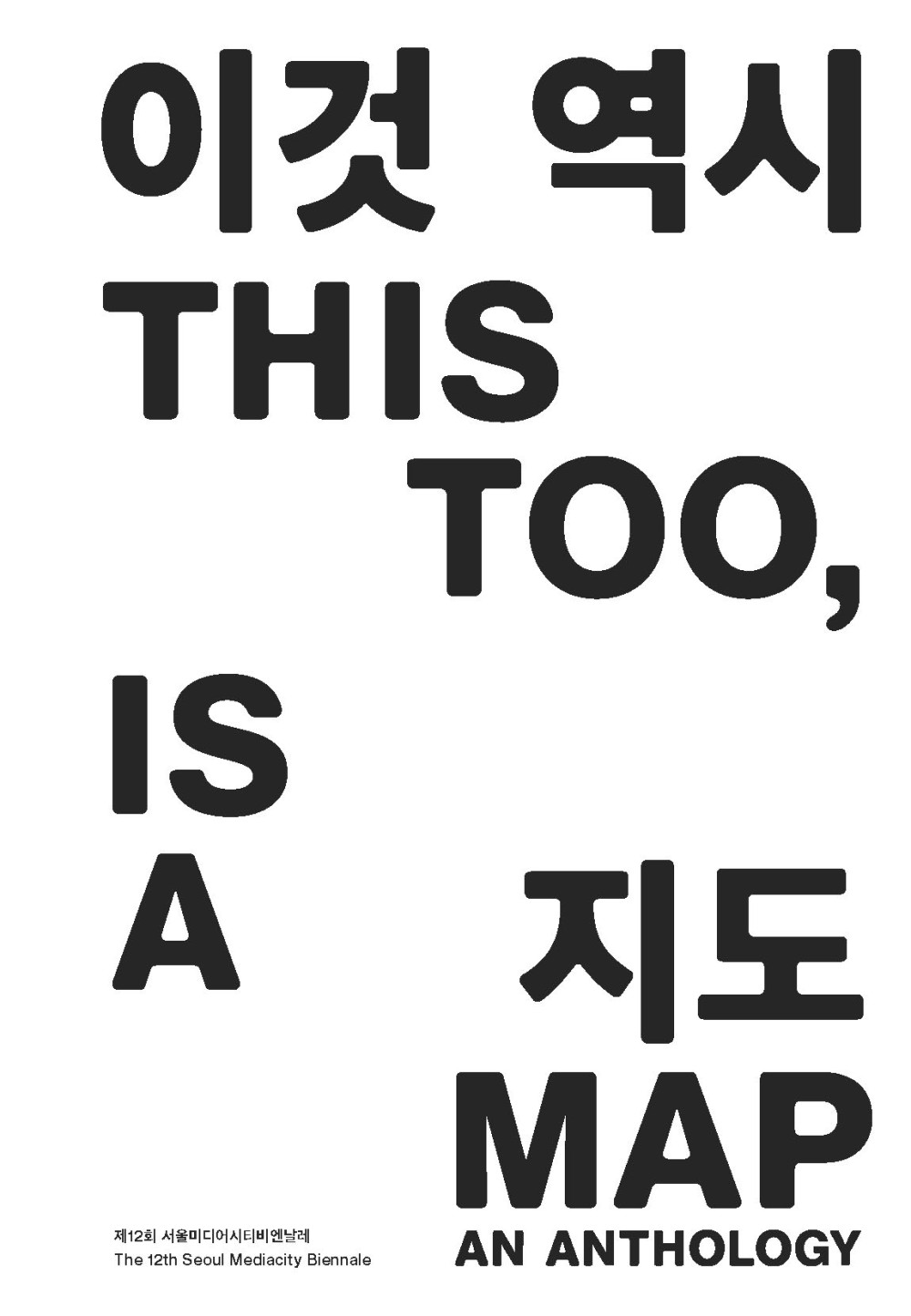
Ximena Garrido-Lecca analyzes the unequal power systems created by different human groups, divided by social, cultural, and geographical borders, who exploit and rule over natural resources and how they shape the world. Protomorphisms: AGC Rope Driver Module is based on the history that data storage devices and computer industries originated in weaving practices, a long-time craft technique. AGC in the title refers to the Apollo Guidance Computer, the early computer system that made possible the 1969 crewed expedition to the moon. The structure is based on a circuit testing board originally used for the Apollo. Garrido-Lecca collaborated with an electronic engineer, utilizing the Apollo Guidance Computer’s blueprints to reproduce writing that was originally used in the computer. She uses natural fibers such as alpaca fleece, cotton, and wool to substitute for computers’ copper wires. The “rope memory,” referring to a data storage device in early computers, was hand-woven wire ropes. The women who played pivotal roles in the weaving process were called rope mothers. The artist sees overlaps between the rope mothers and female guardians of pre-Hispanic cultures, such as Mama Killa of the Inca civilization, Coyolxauhqui of the Aztecs, and Ixchel—the goddess of moon and textiles of the Mayan civilization. The artist connects the contemporary culture of technology and global universality, constructed through western and patriarchal industrialization, with old knowledge systems, including women’s manual labor and protectors of human civilization, encouraging a new way of thinking. The piece also underlines that weavings, primitive human technologies, were a cornerstone of science and the development of western civilization.







